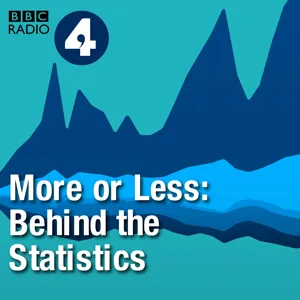Podcast Summary
Impact of shark folklore on perceptions and conservation: Shark folklore, perpetuated by media, has led to negative perceptions and hindered conservation efforts. Understanding this impact can help promote accurate and positive views of sharks.
The stories we tell and the folklore we create around sharks have significantly impacted how we perceive and treat these creatures. As the speaker, Richard Furnacola, recounted, the 1916 New Jersey shark attacks were a turning point in how people viewed sharks. Prior to this event, sharks were not considered a significant threat and were even seen as mythical. However, after the attacks, perceptions changed, and sharks were typecast as ruthless killers. This negative perception has persisted for decades, making it difficult to undo the stigma and promote shark conservation. The media has played a significant role in perpetuating this image, as seen in the ongoing reference to the 1916 attacks. As Amy Briggs, the executive editor of National Geographic History Magazine, noted, this lore has opened people's eyes to the fact that sharks are apex predators and have a crucial role in the ocean ecosystem. By understanding the impact of shark lore on our perceptions, we can work towards promoting a more accurate and positive view of these creatures and their importance in the natural world.
Summer of 1916: Shark Attacks Transform Public Perception: The summer of 1916 saw a series of shark attacks along the Jersey Shore, sparking fear and panic, and forever changing public perception of sharks from overlooked ocean dwellers to global media sensations.
The summer of 1916 marked a significant shift in public perception of sharks from overlooked ocean dwellers to global media sensation. This transformation was sparked by a series of shocking attacks off the Jersey Shore, which claimed the lives of several people and caused widespread panic. At the time, America was still hoping to avoid involvement in World War 1 and was in the midst of an emerging leisure culture. However, the polio epidemic and the allure of the beach brought large crowds to the shore, where they encountered the terrifying reality of shark attacks. The first attack, on Charles Van Sant in Beach Haven, was met with local outrage and fear, leading to a media frenzy after the second attack on Charles Bruder in Spring Lake. The sharks were soon characterized as devilish, uncontrollable creatures assaulting the Jersey coast. The attacks continued with three more incidents just 30 miles north in Matawan, where sharks had never been reported before. These events marked a turning point in the public's relationship with sharks, forever changing the way we view these magnificent yet fearsome creatures.
The Fascination with Sharks: Fear and Fascination: Fear and fascination with sharks have shaped public response since the 1916 attacks, but misconceptions and declining populations pose a threat. Conservationists work to protect sharks and change attitudes.
The shark attacks in 1916 at the Jersey Shore marked the beginning of a fascination with sharks that continues to this day. Fueled by fear and fascination, the public response included a large-scale hunt for the sharks, which set a precedent for future shark-related incidents. This fear and fascination, however, can also pose a threat to shark populations, as many people hold misconceptions about sharks and their importance in the ecosystem. Sharks are not "bad," and it is detrimental that their populations are declining, with 1/3 of shark species currently threatened with extinction. Marine conservation biologists like David Shiffman work to protect sharks and change public attitudes towards them. The complex relationship between fear and fascination with sharks, which was evident during the 1916 attacks, continues to shape our perceptions and actions towards these animals.
Shark Fear: A Modern Perception: The perception of sharks as dangerous killers is largely a modern phenomenon, fueled by increased human interaction in marine environments and sensationalized media portrayals.
The perception of sharks as dangerous killers is largely a product of the last century, fueled by increased human interaction in marine environments and sensationalized media portrayals. Sharks have long been a part of human history and culture, but fear of them escalated during the 20th century due to factors such as more people engaging in ocean activities, military encounters, and media depictions. For example, after the 1916 Matawan man-eater incident, the world was preoccupied with wars, and it wasn't until decades later that the story gained widespread attention. In the 1950s and 1960s, beach culture took off, leading to more people in the water and increasing shark attacks. These attacks were often sensationalized, leading to the demonization of sharks. The reputation of sharks as mindless murderers took hold, despite the fact that their attacks on humans are rare. Understanding the historical context of shark fear can help us appreciate the importance of protecting these essential predators in marine ecosystems.
Real-life incidents and trends fueled shark fears in Peter Benchley's 'Jaws': The publication of 'Jaws' in 1974 and its subsequent film adaptation amplified existing fears of sharks, leading to an increase in shark killings.
Peter Benchley's novel "Jaws" was not the sole catalyst for shark fears, but rather built upon existing trends and real-life incidents. The book, published in 1974 and later adapted into a blockbuster film, drew inspiration from events like the 1958 death of Billy Weaver in Hawaii and the 1959 Kogler attack in San Francisco. These stories, which involved vulnerable victims and heroic attempts to save them, fueled Benchley's thriller. The resulting fear of sharks was amplified by the movie's wide reach, making people more aware of the potential danger in the ocean. This fear led some to try and dominate sharks, resulting in an increase in shark killings. Ultimately, the power of these stories lies in their ability to help us make sense of our vulnerability in the face of the unknown and alien world of the ocean.
Fascination, fear, and conservation of sharks: While sharks inspire fear and entertainment, their primary threat is overfishing, making education and conservation crucial for their survival.
Our fascination with sharks, as displayed through annual events like Shark Week, is rooted in both fear and a deep-seated discomfort with the idea of humans as prey. Despite this unease, we continue to be captivated by sharks, leading to a complex relationship where entertainment and conservation intertwine. However, it's crucial to recognize the importance of accurate information and advocacy. Overfishing, not attacks, is the primary threat to shark populations, and public understanding of their ecological significance is essential for their conservation. Despite the widespread awareness of sharks as charismatic megafauna, many people still misunderstand their role in marine ecosystems and the urgency of protecting them. The inhumane call to overfish sharks continues to threaten their populations on a massive scale, making it essential to challenge indifference and promote education and action.
Respecting Sharks: Beyond Mindless Killers or Cuddly Pets: Sharks deserve respect and understanding. Conservation efforts like ecotourism should prioritize respectful interactions and scientific knowledge. Shark Week can inspire conservation and ocean policy through accurate information.
Sharks are complex creatures deserving of respect and understanding, rather than being viewed as mindless killing machines or cuddly pets. While they may generate income for various industries, it's crucial to consider the potential impact on both the sharks and human safety. Shark conservation efforts, such as ecotourism, should prioritize respectful interactions and scientific knowledge to ensure their survival. Shark Week, with its massive audience, could play a significant role in promoting shark conservation and ocean policy by providing accurate and useful information to viewers. Additionally, the fascination with sharks can inspire future scientists to explore and learn more about these magnificent creatures. Overall, it's essential to appreciate sharks for who they are – wild animals living their lives in the ocean.
The first scientist hero in a major blockbuster: Hooper from Jaws: Jaws instilled fear but also sparked curiosity and appreciation for sharks and ocean conservation
The iconic movie "Jaws" not only instilled fear in people about sharks but also inspired a new generation of marine biologists. The film's hero, Richard Dreyfus' character Hooper, was the first scientist portrayed as the hero in a major blockbuster movie. This revelation came up during a discussion about the New Jersey shark attacks of 1916, which left many wondering about the unknowns in the ocean as they venture into the surf. Despite the fear, people are drawn to the beach and the water, just as they have been for over a century. For those interested in learning more about sharks and their conservation, resources like the International Union For the Conservation of Nature and David Shiffman's book "Why Sharks Matter" are recommended. "Jaws" may have instilled fear, but it also sparked curiosity and a deeper appreciation for the ocean and its inhabitants.






